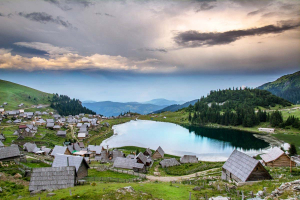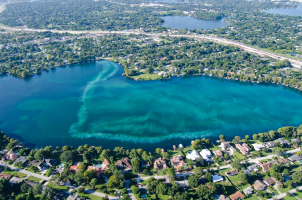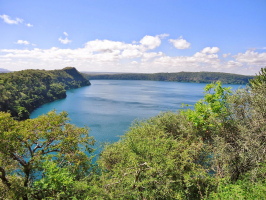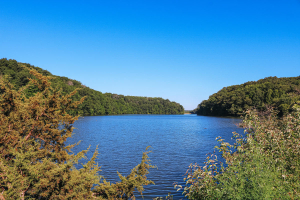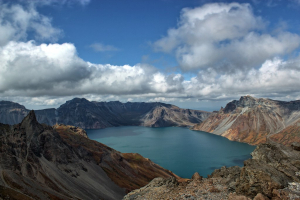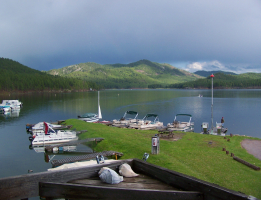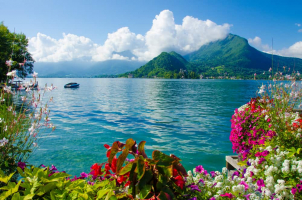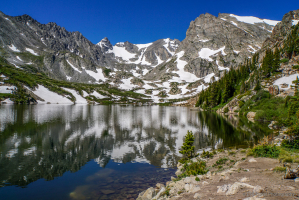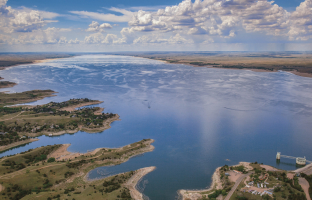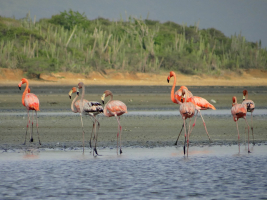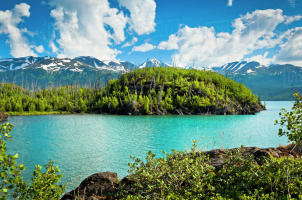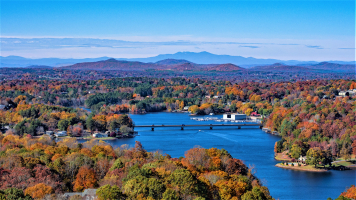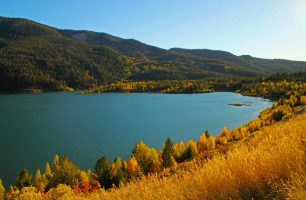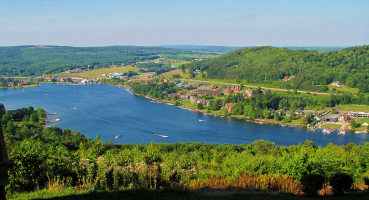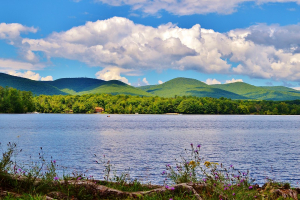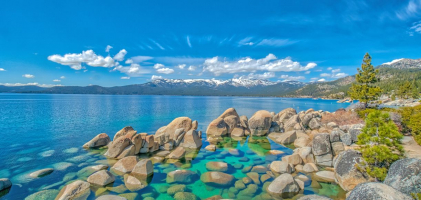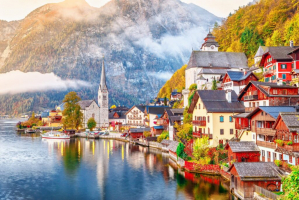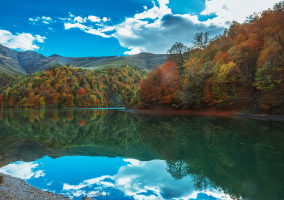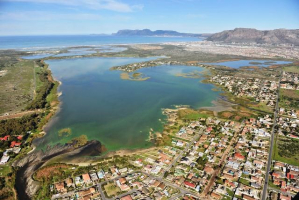Top 10 Best Lakes to Visit in Estonia
Estonia is known to be "The land of lakes". With close to 1,500 lakes, the waters of Estonia are considered one of the country's most valuable natural ... read more...resources. Moreover, the lakes in this country also provide avenues for travel, and contribute greatly to Estonia's tourism, as lots of Estonia's lakes are beautiful and known for being a famous tourist attractions. In this list, we will introduce to you some of the best lakes to visit in Estonia.
-
Lake Peipus is the largest transboundary lake in Europe and is the fifth-largest in Europe after Lake Ladoga and Lake Onega (Russia), Lake Vänern (Sweden), and Lake Saimaa (Finland). It covers 3,555 km2 and has an average depth of 7.1 m (23 ft). This lake is shared by Estonia and Russia, making visitors enjoy the fact that they can visit two countries at once when they visit the lake. Lake Peipus has several islands and consists of three parts: Lake Peipsi / Chudskoye in the north, Lake Pihkva / Pskovskoye in the south, and Lake Lämmi / Tyoploye in the middle connecting the other two parts of the lake.
Lake Peipus has a rich history. Visiting the lake, you can stop by Pskov, the largest city on the lake and also one of the oldest cities in Russia, known from at least 903 AD. Moreover, the lake has a very diverse ecology, flora, and fauna. The wetlands of the coastal strip of the lake are important resting and feeding grounds for swans, geese, and ducks migrating between the White Sea, Baltic Sea, and western Europe.
You can get on a boat tour to enjoy the view of the lake, or participate in many fun activities on the shores of the lake. The picturesque shores of Lake Peipus are a popular destination for tourism and recreation at several tourist camps and sanatoriums.
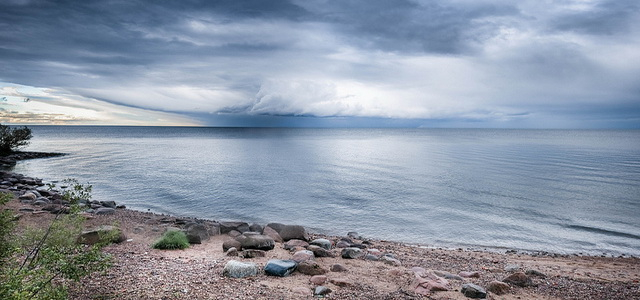
Photo: https://www.waterdatabase.com/lakes/lake-peipus/ Video: LIVEst - Estonia / Эстония / Eesti -
Lake Võrtsjärv is the second largest lake in Estonia, just behind Lake Peipus. Therefore, this is the largest lake situated entirely within Estonia with an area of 270 km².
With its size, Lake Võrtsjärv also has a very diverse ecology, flora, and fauna. Around 35 species of fish are found in the lake, a few of which are considered to be commercially important. Located in the south of Estonia, and being nearby wetlands, the lake is an important breeding ground for birds. 213 bird species have been recorded around the lake. Especially, the lake is the largest natural eel breeding farm in Europe.
Lake Võrtsjärv was voted European Destination of Excellence in 2010, proving its attraction to tourists from all over the world. You can discover the area around the lake on foot or by bike. Both the visitor's center on the northern shore and the rest areas around the lake offer arrestingly beautiful views. The lake also has lots of beautiful swimming places for visitors to enjoy. Next to the visitor's center, an observation tower offers a beautiful panorama view of the lake. There is a small picnic area where you can camp with your family and friends. You can also have a fun boat trip in Oiu port.
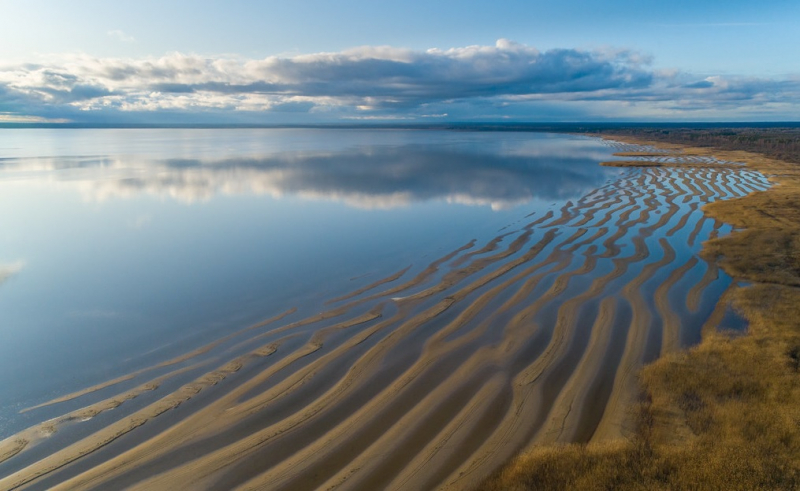
Photo: https://www.flickr.com/photos/blizzardfoto/48981357778 Video: roadwaffle -
Lake Saadjärv is one of the most distinctive and interesting lakes in Estonia. Being 6 kilometers in length and up to 1.8 kilometers in width, and covering an area of 707.6 hectares, lake Saadjärv is the only lake to make the top ten of both the biggest and deepest lakes in Estonia. It is the largest lake in the Vooremaa region, located in the Vooremaa Landscape Protection Area on the border of Jõgeva County and Tartu County.
Lake Saadjärv is well-known for its history and folklore instead of its ecology. According to folklore, when Estonia's national hero walked through the lake, the water only came up to the laces of his leather shoes, letting the hero go to a church at the bottom of the lake. There is, in fact, a church at the bottom of the lake. Even now, when the weather is in good condition and the water is calm, the church spire can still be seen at the bottom of the lake.
Lake Saadjärv is a popular recreational area and it offers many exciting activities throughout the year. Additionally, there are cultural sites, museums, places for spending the night, and several sandy public beaches with playgrounds for visitors to enjoy.
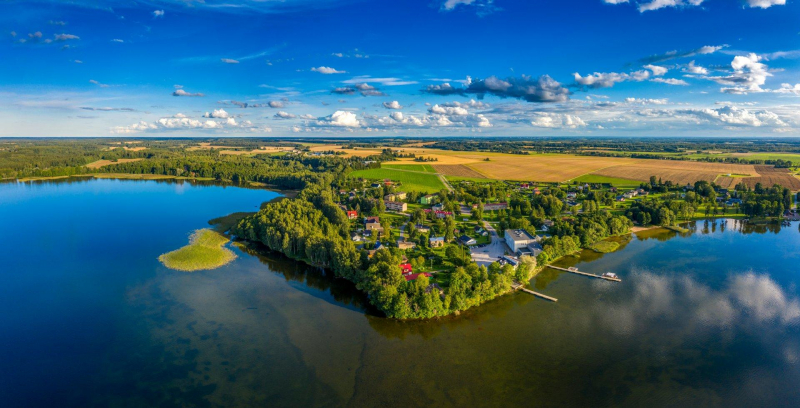
Photo: https://visittartu.com/ 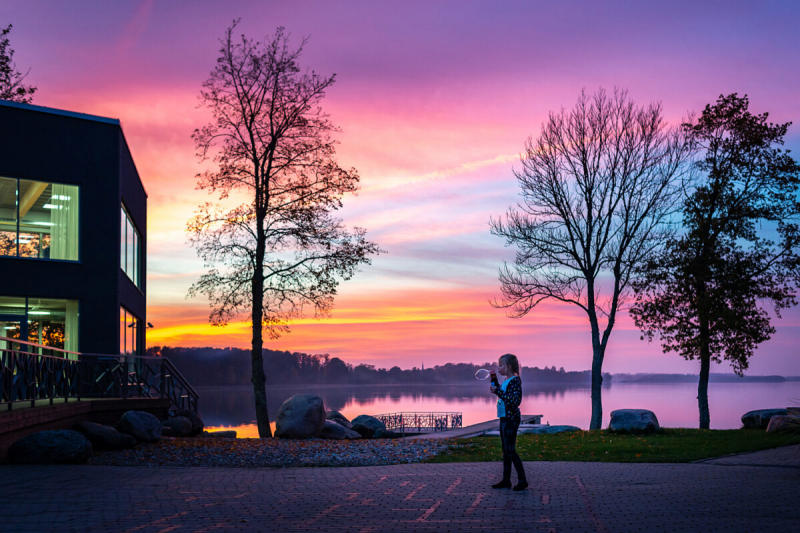
Photo: https://visitsouthestonia.com/ -
Lake Vagula is situated in the west of Estonia (2 km to the west of the town of Võru). The lake area is 602.8 ha with a shoreline length of 17.8 kilometers, and an average depth of 5.3 meters. The Võhandu River, the longest river in Estonia, takes the water from Valgula to Lake Peipsi through the so-called Italian Channel.
Lake Vagula is home to various species of fish and birds. Therefore, this lake is a favorite fishing and birding spot for both local residents and tourists. Visiting the lake, you will see many fish species: bream, bass, ruffe, roach, pike, pike-perch, ide, carp, etc. You will also get to see many kinds of water birds that nest around the shores of the lakes including the Great Crested Grebe, Eurasian Coot, Mallard, Eurasian Teal, etc.
Lake Vagula has a very calming and refreshing atmosphere, therefore, lots of people come to the lake to have a moment of their own, or to find peace within themself. You can go to the lake just to enjoy the view, or go with your friends and family, have a barbeque, go fishing, swim, tan, or combine all of these and take the floating sauna for a stroll around the lake.
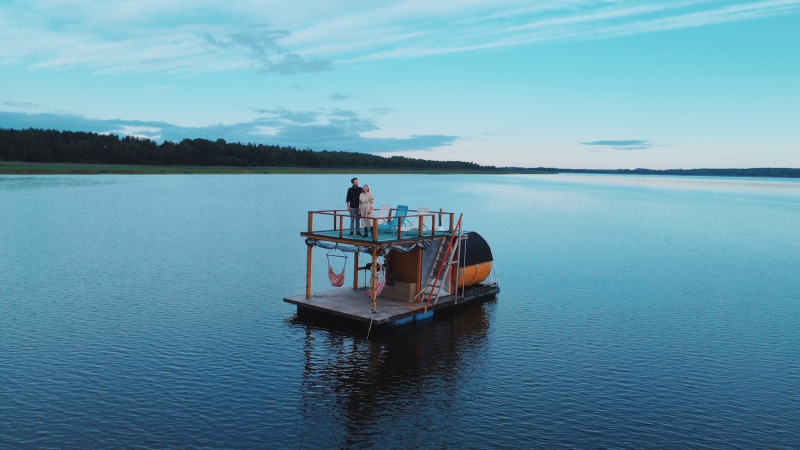
Photo: eestipaigad.ee Video: Eesti Paigad -
Lake Ermistu, also known as Lake Tõstamaa, is a lake that belongs to the Ermistu village in Tõstamaa Parish, in the south - western of Estonia. This lake is 449.5 ha in width, so it is the largest in Pärnu County and West Estonia. The lake is important because of its mud. The mud found in this lake has been acknowledged as curative mud, used by many medical establishments.
Lake Ermistu is a favorite spot for recreational fishers since it is the best place for fishing in western Estonia. You can also see many kinds of birds here as well since the place is quite quiet and calm most of the time (except for summer). However, located just half an hour drive from Pärnu, which is the summer capital city of Estonia, this lake is known for the variety of activities that tourists can do when they visit there in the summer.
The shores of the lake are described as those of the beach because of its beautiful white sand and stunning blue water. Lake Ermistu is the perfect place for a picnic, relaxing, or just enjoying nature. There is a mini playground and a picnic area for families, from which there is an observation tower where you can see the whole view of the lake in the area of meters.
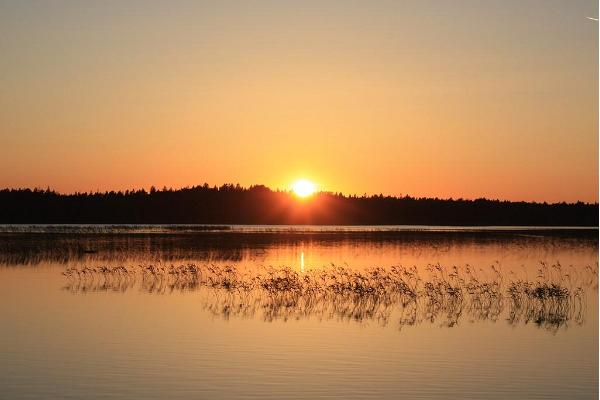
Photo: https://www.visitestonia.com/en/lake-ermistu Video: Baltic Travel -
Lake Tõhela is a 401-ha lake that belongs to the Männikuste village in Tõstamaa Parish, Pärnu County, southwestern Estonia. This lake is located near lake Ermistu and shares many similarities, from ecology to tourism.
Lake Tõhela is rich in fish and therefore is a favorite fishing place for both locals and visitors. The first international Estonian Naturism Lake Camp 2019 was held in Lake Tõhela Holiday Village. If you want to try fishing in the lake, you can hire boats, canoes, and fishing gear. The lake is also home to many different bird species including white-tailed eagle whom you may also spot through binoculars if you are lucky. Many people come here just to try to spot the beautiful bird.
Another favorite activity that is loved by many in Lake Tõhela is camping. The camping area is located on the shore of the lake in the Ermistu-Tõhela Protected Area. Camping with tents is possible on the shore of the lake and there are 20 places for tents. There are also campfire grounds and a small shelter where you can sit and have a meal. It is possible to rent barbeque equipment and buy firewood. There is also a sandy "beach" for swimming, a stone jetty, boat docks, and fire pits, with a hiking trail nearby.
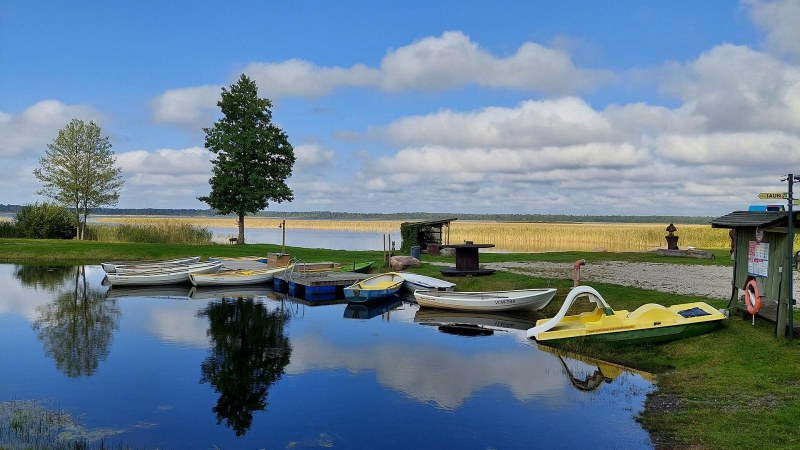
Photo: https://www.visitestonia.com/ Video: Naturist.Holiday -
Lake Pühajärv is a lake that is part of Lake Pühajärv Park, located near the town of Otepää, Estonia. This lake is the water source of the Väike Emajõgi river. The name of this lake means "Holy lake", which is a very special name that shows how much Estonian favor this lake. The picturesque coastline and five islands of Lake Pühajärv make it the biggest lake in the region.
Being in the center of Lake Pühajärv Park, Lake Pühajärv is a green and friendly place for families with children, and has many fun activities. There are many opportunities to feed ducks and other birds when walking on the lakeshore. There is also a beach with a beach house, ball game courts, a children's playground, rest areas, cafés, and a pier by the northern tip of Lake Pühajärv. On the southern tip, there is the Kooliranna recreation area, where River Väike Emajõgi starts. Pühajärve Park is where the Murrumetsa hiking trail begins and there is also a 12 km hiking trail around Lake Pühajärv.
The Spring of Love is the most well-known of the lake's many springs. A wooden sculpture was erected by the park on the lake's coast in 1991 to honor the Dalai Lama Tenzin Gyatso's blessing of the lake.
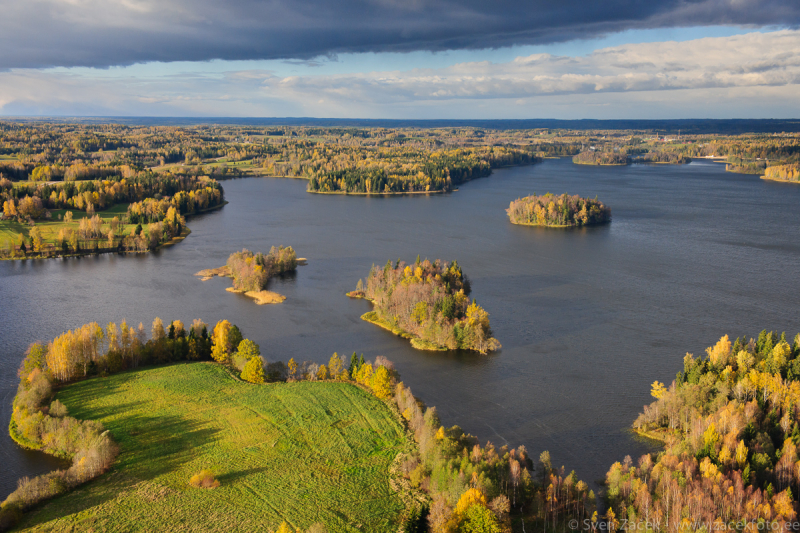
Photo: https://www.zacekfoto.ee/en/image/puhajarv-lake/ Video: LIVEst - Estonia / Эстония / Eesti -
Lake Tamula is located on the southeastern side of the town of Võru, Estonia. The lake has an area of 2.313 km², and an average depth of 4.2 m. Lake Tamula represents one of the 28 places worth exploring in Southern Estonia, marked with a yellow window by National Geographic for its beautiful sceneries, various activities, and high-quality facilities around it.
There is a suspension bridge called Roosisaare bridge on the northern end of the lake where you can witness the breathtakingly beautiful view of Lake Tamula. You can take the beach promenade at Tamula Hotel and runs along the beach to get there. There are lovely benches and swings next to the promenade, which is perfect for observing the ducks and swans swimming peacefully in the lake.
Lake Tamula is a favorite place for holidaymakers. There are attractions for children on the beach, exercise machines for sports enthusiasts, and a beach bungalow where you can enjoy the fun of the lake in summer. The sailing ship "Tuuletark" is waiting for those interested in sunset trips in summer. "Tamula Vanake" offers fun rides with a sauna and a grill. During the winter, fishing fights and winter rallies take place on Lake Tamula.
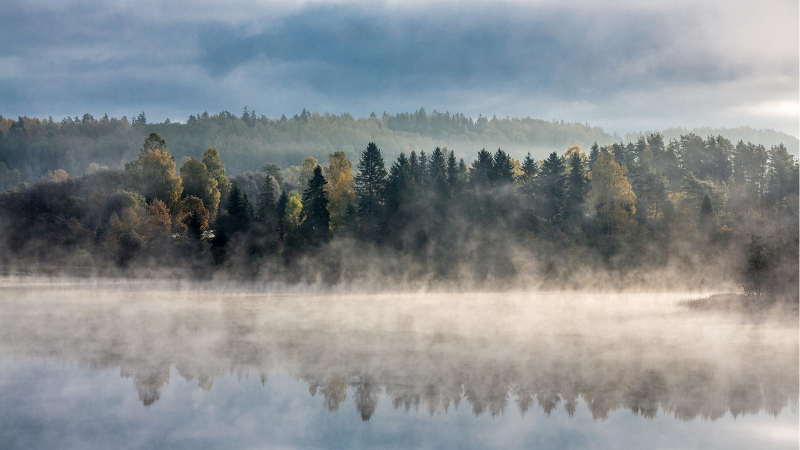
Photo: https://www.visitestonia.com/ Video: Tourist Photos -
Lake Hino with an area of 200 ha and a depth of 10.4 meters, is the largest and most island-rich lake in Haanja, Estonia. The lake has a broken-up shoreline and varied bottom relief. This lake is a lake-type eutrophic oligo-trophic with small through-flow and without large inflow. It is fed mostly by springs and rainwater. However, the original water level of the lake has decreased by about 3.5 meters. As a result, the eastern part of the lake has formed a separate lake called "Lake Mustjärv".
Lake Hino is rich in species of fish including bream, roach, perch, pike, tench, ruffe, rudd, bleak, silver bream, crucian carp, eel, etc. But birding is actually by far the favorite activity of people when they visit the lake. Lake Hino is home to 40 species of birds, 15 of which are connected to water- and shore habitats. The rarest one is the Black-throated Diver (Gavia Arctica) which is included in the Red Data Book of Estonia as an extremely endangered species.
Hino Lake Landscape Reserve is built around the lake, with the main purpose being the protection of birds that live in the lake; however, the protection of lake Hino as a beautiful natural object is not any less important.
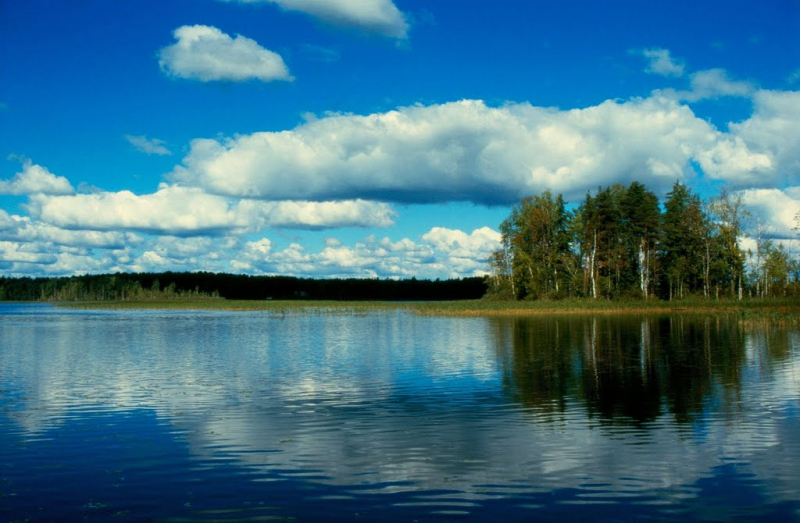
Photo: https://mapio.net/pic/p-58857935/ 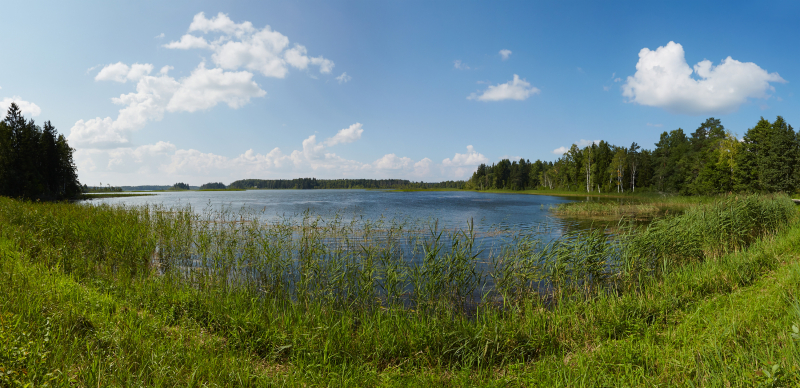
Photo: Wikipedia -
Lake Raku is a man-made lake in Tallinn, Estonia, between Männiku Road and Viljandi Highway. Its length is 3130 meters, and its width is 1070 meters. this is the average lake size in Estonia. The northeast portion is up to 18,2 meters deep, according to sonar surveys, while the average depth is 7,2 meters.
Lake Raku is a lake known mostly to local residents. Most people come here to relax, camp, go fishing or have a walk with their dogs. Therefore, you might have to ask locals to know the exact way to get to the lake. This lake doesn't really stand out except for when winter comes. When snow falls and the water surface is frozen, this lake has a whole different atmosphere, mostly because of the tiny island in the middle of the lake.
The island in the middle of lake Raku is called Evari island. This is a super small island. Its size is only about 50x50 meters. Since there was a thick layer of ice that covers the lake's surface, it is very easy to walk to the island. From the island, you can witness the whole view of the lake and the forest around it.
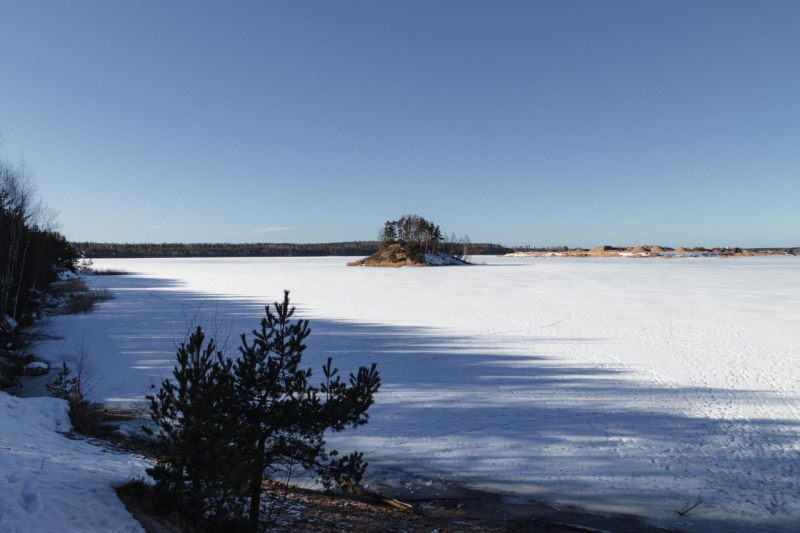
Photo: https://peakd.com/ Video: Denis Shlenduhhov












